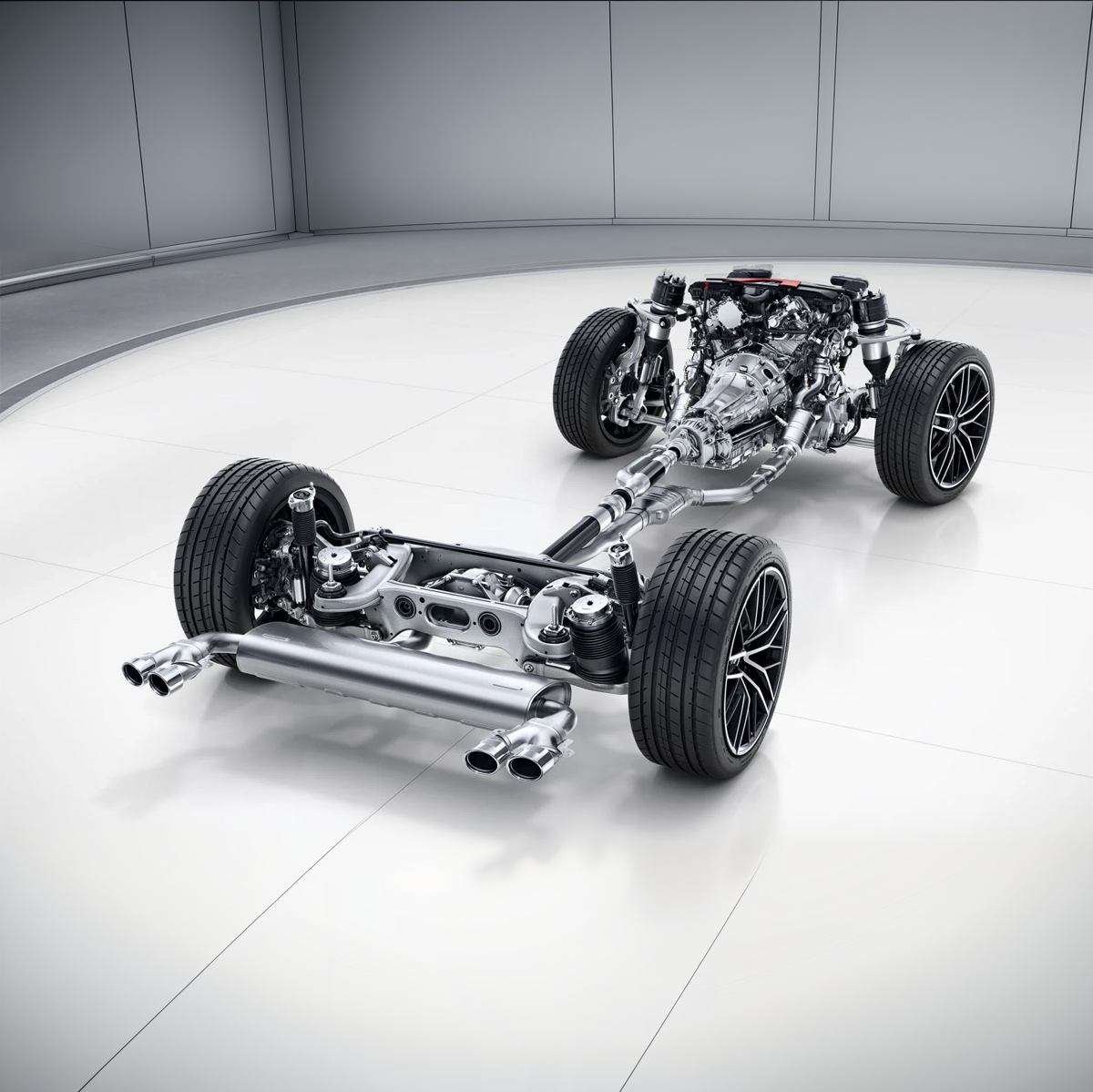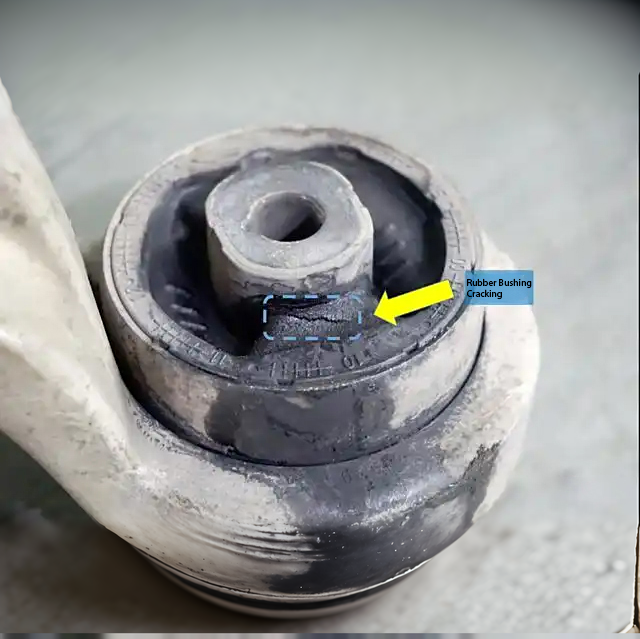Types and Features of Automotive Suspension Systems
The suspension system in a vehicle is a crucial component that connects the car’s body to its wheels. It plays an essential role in absorbing shocks caused by uneven road surfaces, providing a comfortable ride, and ensuring vehicle stability and handling. Depending on design and functionality, suspension systems can be classified into various types, each with its unique features and applications. This article will introduce several common suspension types and their characteristics.
- MacPherson Strut Suspension

Features:
- The MacPherson strut suspension is a common independent suspension system, widely used in front-wheel-drive and some rear-wheel-drive vehicles.
- Its key feature is the use of a vertical strut (the MacPherson strut), which serves as both the shock absorber and the connection between the wheel and the vehicle body. The strut isolates the vertical movement of the wheel from the vehicle body, simplifying the design.
- Simple structure, compact size, and relatively low cost, making it suitable for mass production.
Advantages:
- Small space requirement and flexible design.
- Relatively low cost, making it suitable for mass-market vehicles.
- Provides a balance between comfort and handling.
Disadvantages:
- Due to its simple structure, it may not provide as much support as more complex suspension systems, possibly leading to instability under extreme handling conditions.
- Requires precise suspension tuning to balance comfort and handling performance.
- Double Wishbone Suspension

Features:
- The double wishbone suspension is a common independent suspension type, mainly used in high-performance and luxury vehicles. It consists of two independent control arms (upper and lower) that are connected by a horizontal link, which maintains the wheel's movement trajectory.
- The independent design of the double wishbone system allows for more precise control of the wheel's position during vertical movement, resulting in better handling performance.
Advantages:
- Excellent handling, especially at high speeds and during sharp turns.
- Precise adjustment of suspension geometry improves comfort and stability.
- Suitable for high-performance sports cars and off-road vehicles.
Disadvantages:
- Complex structure, leading to higher manufacturing costs.
- Requires more space, which may limit vehicle design flexibility.
- Multi-Link Suspension

Features:
- The multi-link suspension is a more complex independent suspension system, typically consisting of three or more link arms. The system uses these multiple link arms to control the wheel's movement trajectory, providing higher precision.
- This system is commonly used in rear suspensions, especially in luxury cars and sports cars.
Advantages:
- Provides excellent balance between handling and comfort.
- Allows for precise control of wheel movement, reducing wheel deformation and negative impacts.
- Offers superior stability, especially for high-performance or heavier vehicles.
Disadvantages:
- Complex structure, leading to higher costs.
- Takes up more space, limiting design options.
- Torsion Beam Suspension

Features:
- The torsion beam suspension is a common non-independent suspension system, typically found in compact and mid-range cars. The system consists of a single horizontal beam that connects both wheels, and the beam deforms to absorb shocks.
- This system is simple, compact, and cost-effective.
Advantages:
- Simple structure and low cost, ideal for mass-market vehicles.
- Provides adequate comfort and handling for everyday driving.
- Space-efficient, making it suitable for compact vehicles.
Disadvantages:
- Poor handling, especially during high-speed driving or aggressive maneuvering, as the wheels are not independently controlled.
- Limited suspension performance, resulting in lower comfort and stability.
- Air Suspension

Features:
- Air suspension uses air springs instead of traditional metal springs, adjusting the suspension's stiffness and height by compressing air. It is commonly found in luxury cars and off-road vehicles.
- This system can automatically adjust the vehicle's height based on load and driving conditions, offering superior comfort.
Advantages:
- Automatically adjusts the vehicle height based on speed, road conditions, and load, providing a smoother ride.
- Excellent handling performance, especially at high speeds, with enhanced stability.
- Great off-road capability, offering superior ground clearance for diverse terrain.
Disadvantages:
- High cost and complex maintenance.
- Relies on an air compression system, which may face issues like insufficient air pressure.
- Complex structure, leading to higher repair and maintenance costs.
- Solid Axle Suspension

Features:
- The solid axle suspension (also known as live axle suspension) is a non-independent suspension system commonly used in rear-wheel-drive and four-wheel-drive off-road vehicles. It consists of a solid axle that connects the two wheels.
- The system is simple, rugged, and capable of handling heavy loads.
Advantages:
- Simple and durable, ideal for off-road or heavy-duty vehicles.
- Offers high load-bearing capacity and excellent off-road performance, ideal for tough terrains.
- Low cost, making it suitable for heavy-duty vehicles.
Disadvantages:
- Poor independent wheel movement, leading to less precise handling, especially at high speeds.
- Firmer suspension, resulting in lower ride comfort.
Conclusion
Different suspension systems offer distinct features, making them suitable for various types of vehicles and driving needs. The MacPherson strut suspension, with its simple structure and low cost, is the most common choice for city sedans; the double wishbone and multi-link suspensions are ideal for high-performance sports cars and luxury vehicles, offering superior handling; while air suspension provides excellent comfort and adaptability, especially in luxury and off-road vehicles. Understanding these suspension types and their characteristics can help consumers make more informed decisions when purchasing a car, and also provides valuable insights for engineers when designing and optimizing suspension systems.




Leave a comment
This site is protected by hCaptcha and the hCaptcha Privacy Policy and Terms of Service apply.